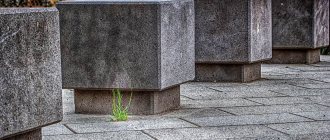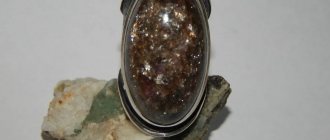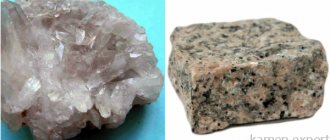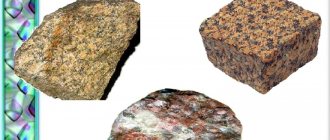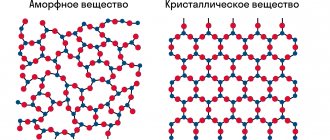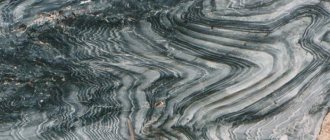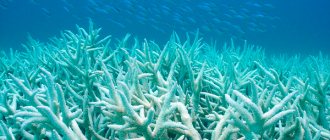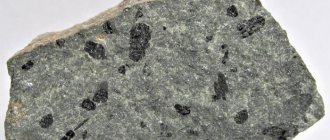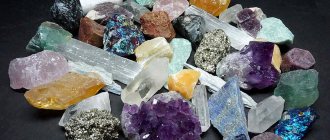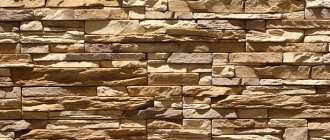Marl is one of the most common rocks. Outwardly, it is absolutely unattractive, which is why it is not popular among collectors and jewelers. However, the stone has found application in agricultural and construction fields. It is used to reduce soil acidity and produce bonding compounds.
Marl mineral
The name "marl" comes from the German language. It is also called “rukhlyak” and “clayey limestone”. Marl is very similar to shale, mudstone, and siltstone. Depending on the ratio of the main components and the composition of additional impurities, it has different properties and characteristics. Thus, more than twenty types of it are distinguished: gypsum, clay, chalk-like, calcareous, cement, freshwater and others.
Marl is not a mineral. It is precisely a rock composed mainly of clay particles and calcium carbonate in any mineral forms. In most cases, it consists of a mixture of clays, dolomites and gypsum in various proportions, sometimes of clay and silicates.
Depending on the mineral composition of the carbonates that are included in the marl, it is divided into limestone, dolomite or gypsum-dolomite. According to the composition of impurities, it can be carbonaceous, sandy, siliceous, mica, etc.
Ecology DIRECTORY
Marl contains from 25 to 50% CaCO3, a certain amount of MgCO3 and other impurities. It represents a rock in which calcium carbonate is mixed with clay, and often with clay and sand. Marl deposits occur in the form of crumbly mass and dense rock. Dense marl must be taken out to the field in winter and piled in small heaps. Under the influence of moisture and changes in temperature, it loosens and turns into a mass that crumbles into small particles, which can be applied to the soil. The dose of marl is set depending on the CaCO3 content. When used in quantities equivalent to calcium carbonate, marl is not inferior in effectiveness to lime flour.[...]
Marl is a calcareous rock containing from 20 to 80% calcium and magnesium carbonates, with large admixtures of sand, clay and other substances. Used as lime fertilizer. Loose marl does not need to be ground, but dense marl turns into a crumbly mass in heaps left in the field for the winter.[...]
Marl is a calcareous rock with a large amount of clay and sand. Deposits are most often found near eroded river banks and in ravines. This rock is a crumbly, lumpy mass. Usually the marl is not ground, but taken out to the field and left in small heaps. Under the influence of moisture and low temperatures in the autumn-winter period, it cracks and turns into an easily crumbling mass, which is scattered across the field in the spring. Marl is usually added in higher doses than dolomite flour (1.5-2 or 3-4 times): the more impurities, the greater the dose. Therefore, it is advisable to apply mortar in fields close to the deposit.[...]
Meadow lime and meadow marl are whitish, grayish-yellow accumulations of calcium carbonate, forming independent horizons of varying thickness. They usually occur in the profile of soils of different genesis, swamped with hard groundwater (often groundwater pressure) [...]
It is characterized by continuous carbonate impregnation with a CO2 carbonate content of more than 30%. Pale-white or off-white with grayish or brownish tints. When wet it is soft and non-plastic, but hardens when dry. It is the result of hydrogenous accumulation of carbonates.[...]
The condensed nature of the glauconite marls, their specific mineral composition, and their occurrence at the base of a succession of chalk allow them to be interpreted as temopelagic deposits, roughly comparable to sediments now observed on the banks off the coast of southern California, and more specifically to the relict phosphates and glauconites of the Agulhas Bank off the coast of South Africa (section 11.3.6). The glauconite marls clearly mark the phase of increasing depth and transgression of the basin, during which pelagic conditions extended into this part of northern Europe. Redeposited nodules, as well as successive generations of drilling, encrustation and mineralization, make it possible to judge strong bottom currents. [...]
Ground limestone, dolomite flour, tuff, drywall, marl and all types of plant ash can be added to the soil in the fall along with manure (unrotted manure can be added in the fall). First, lime fertilizers are scattered around the area, and then manure. The soil is dug up on the same day.[...]
CA—horizon of accumulation of amorphous lime or marl. Light-colored (gray, whitish) usually loose accumulations of hydrogenic origin.[...]
Calcareous tuff, peat tuff, drywall (lake lime), marl - local deposits containing 28-50% calcium oxide are used for liming acidic podzolic soils. [...]
In practice, limestones, chalk, dolomites, and marls are used. Dolomite CaC03MgC03 contains, in%: CaO - 30.4; MgO - 21.7; CO2 - 47.9. Meg-rel - sedimentary rock of clayey-carbonate composition contains, in%: SiOa -8.02-53.32; A1203 - 1.52-9.92; Fe203 - 0.44-3.30; MgO—0.26-1.95; CaO -18.18-50.44; S03 - 0.05-0.75.[...]
The aquifer is underlain by Neogene loams, marls, and cemented pebbles, the roof of which decreases from northwest to southeast. In the same direction, the thickness of aquifer deposits increases correspondingly—from 10–15 m in the northeast to 100 m or more in the southwest. The filtration coefficient of the upper, most permeable part of the aquifer is 170-340 m/day, in the lower part - 20-40 m/day.[...]
The Upper Cretaceous deposits contain waters of the calcium chloride type with mineralization from 60 to 135 g/l, with a low content of sulfates (1% equivalent) and a high iodine concentration (> 10 mg/l).[...]
The mineral composition and genesis of carbonate sapropels and lacustrine marl (“drywall”) are described below.[...]
The mineral composition and genesis of carbonate sapropels and lacustrine marl (“drywall”) are described below.[...]
The third group of calcareous materials includes defecate, calcareous tuff, marl, drywall, peat tuff, etc. [...]
In the sediments of the Ufimian stage, groundwater is confined to interlayers of limestone and marls. They were opened at a depth of 20.0–88.0 m and are pressure. The pressure value under the roof of the aquifers varies from 3.9 to 46.9 m. The maximum pressure value is observed in the central part of the site, where the Ufimian stage is covered by a thick layer of Neogene clays. Water levels are established at depths from 8.0 to 41.0 m. The filtration coefficient of water-bearing rocks varies mainly from 0.02 to 8.7 m/day. Based on the results of pouring into fractured limestone, a filtration coefficient of 33.5 m/day was obtained. [...]
To accelerate the homogenization of the melt, it is advisable to replace refractory limestone with marl or marly limestone. To increase the yield of the melt and stabilize the rhythm of the mineral wool conveyor, the charge with “long” melts must be melted and homogenized in such melting units as: a cupola with two or three tuyeres and intense heated blast; baths and electric ovens. Based on the results of smelting, it was established, for example, that the use of high-sulfur Kiesel coal waste as a raw material with cold air blast leads to an increase in sulfur dioxide emissions (compared to the raw material slag of one of the metallurgical plants).[...]
The aquifer with a layer thickness of 30 m consists of fractured limestone with layers of marl and clay. Two weeks after the start of the experiment, the iron content in the water supplied from the artesian well decreased from 2 to 1 mg/l.[...]
Table 51 presents the characteristics of such soil formed on the eluvium of Permian marls in the Kotlas district of the Arkhangelsk region. [...]
In the Upper Cretaceous aquifer complex, the water-bearing complex is fractured limestone and marl. Open porosity of limestones is 0.6-9.7%, marls 0.3-11.5%, permeability MO - 5 m2. Their water abundance is low (0.6–30 m3/day) and depends on the degree of fracturing. In the foothills of Crimea, fractured sandstones and marls are water-bearing. The mineralization of water increases from the frame of the basin (from the southern slopes of the Ukrainian shield and the northern foothills of Crimea) to its internal parts. In most of the Plain Crimea, water mineralization averages 20-27 g/l. The most highly mineralized waters (80 g/l) in the Upper Cretaceous deposits were discovered in the Krylovskaya area.[...]
The soil-forming rocks are eluvial-deluvial deposits of clays, limestones, marls, sandstones, and less commonly, igneous rocks. Alluvial sandy-clayey rocks are widespread in the central part of the zone. A common characteristic feature of the soil-forming rocks of the zone is skeletal nature and the predominance of fine sand in the composition of the fine earth.[...]
Soft calcareous rocks that do not require grinding include tuffs, peat tuffs, drywall and marl. All of them contain calcium in the form of carbon dioxide salt (CaCO3).[...]
At the same time, there are significant differences in the pedigrees of the bulls mentioned. Attic's grandfather, Granit chsZE (son of Mergel), gave birth to 60 daughters with an average milk yield in the third lactation of 5163 kg and a milk fat content of 3.86% (these daughters were 6% higher in milk yield than cows of their age). Father Cherdak's mother, the cow Medvedka chs55 (daughter of Mergel, who left 10 daughters with a milk yield in the third lactation of 5212 kg, milk fat content 3.86%), is an outstanding animal in terms of milk productivity (her milk yield in the seventh lactation was 7637 kg, and the milk fat content was 4 .26%). She was mated with a very valuable bull Nalet chs!60, who left 49 daughters (their average milk yield in the second lactation was 4075 kg, and the milk fat content was 3.98%), also superior in milk production to their peers. Attic's mother, Chaika chs229 (granddaughter of Mergel and daughter of Granita chs39), who produced 7601 kg of milk with a fat content of 3.88% in her fifth lactation, surpassed her mother in milk production. Thus, the pedigree of the Attic bull reflects purposeful selection and reasonable selection, aimed at increasing and hereditary consolidation of high milk productivity.[...]
The accumulation of water in swamp depressions is enhanced by water-resistant rocks (clays, marls) lying close to the surface, especially if they are covered from the surface by water-intensive sands. [...]
It is necessary, in particular, except in special cases, to avoid introducing very large quantities of soil-improving materials. The application of marl or lime 15-20 years in advance, which was practiced before, cannot be recommended at all. This requires significant investment and excessively accelerates the decomposition of humus in the soil. In addition, and most importantly, such an operation sharply changes the pH of the soil with all the negative consequences for the activity of microorganisms, the transfer of nutrients into an insoluble state and the possible binding of some microelements (chlorosis of fruit and grapes due to the binding of iron, heart rot of beets as a consequence of the subsoil of boron , manganese deficiency for grains due to the transfer of soil reserves into an insoluble state, etc.).[...]
The upper part of the section (Fig. 8.41) represents seven cycles of enclosed reservoir deposits and evaporites. Each cycle begins with freshwater marls and/or diatomites and then progresses to shallow-water selenite gypsum (Section 8.6). In different areas, the cycles are completed in different ways: by sebkha deposits, cut and karst surfaces, or partially calcitized layers of gypsum. These uppermost parts of the cycle reflect the existence of the three most common depositional zones. In some areas they are in turn overlain by clastic continental (?) sediments and then everywhere by pelagic normal marine deep-sea carbonates of the Lower Pliocene Trubi Formation.[...]
Thus, the Romans, for example, knew the fertilizing effect not only of animal eruptions, but also of certain mineral substances, such as ash, gypsum, lime, marl; several varieties of marl were distinguished, of which one or the other was preferred, depending on the nature of the soil; between fertilizers of animal origin, they especially highly valued the eruptions of birds as energetically acting. They also knew that with fruit rotation, more products can be obtained with the same amount of fertilizer than with a monotonous crop.[...]
In the geological map of the planet, the sharp difference in the chemical composition of sedimentary rocks (taking into account the water, oil, carbonaceous organic rocks, marl and clay, weathering crust, in particular, missed by Clarke; § 51) should have an expression similar to the rocks of the geological map.[...]
P1. Unstable - susceptible to certain technogenic loads (terrigenous and carbonate-terrigenous sedimentary formations consisting of coals, limestones, dolomites, marls interbedded with other rocks).[...]
Groundwater lies on the impermeable soil horizon of loose sediments or dense rocks. Relatively waterproof aquifers are clays, crystalline shales, granites, unfractured limestones, marls, etc. In soils, illuvial horizons B can become compacted and play the role of aquifer. The accumulation of iron oxides in soils leads to the formation of waterproof orthstein and orthzand horizons. In areas with permafrost, the role of aquifer can be played by frozen rocks, over which freezing or non-freezing cadmary groundwater lies. When lying close to the surface, the aquitard creates temporary or permanent excessive waterlogging of the PTC, which leads to the formation of swamps and swampy forests. [...]
Returning to the most detailed Prussian maps, we note their important features: the number of sections on them was large; for example, “diluvium” (“moraine soils”) was divided into 14 categories, and alluvium into 32. Soils as geological formations (for example, “valley alluvial sand” or “marl with sandy loam weathering crust”) were designated by color; granulometry - in letters: S - sand, L - loam, etc. To show the structure of the soil and its physical condition, important for agriculture, alphanumeric formulas were used, which could, for example, mean: “humose sand with permeable sandy subsoil; groundwater is nearby.”[...]
Example 2. The storage facility for solid waste produced by a metallurgical plant is located on the Second floodplain terrace, composed of Quaternary-Neogene alluvial sandy-clay deposits with a thickness of about 50 m; below lie aquiferous fractured limestones and marls of Devonian age.[...]
Cherkassy, drilled directly south of the Ufimsky field, the interval of 2147-2176 m in the section of the Famennian stage based on core and cuttings is represented by dark gray dense limestones with interlayers of sandy brownish fine- and medium-grained limestones with the inclusion of clays and grayish-black dense marls. Sandy varieties are saturated with oil. According to standard logging and RK data, two layers are distinguished, lying in the intervals of 2147.5-2153 and 2156-2176 m. The resistivity of the upper layer reaches 1000 ohm, the lower - 2000 ohm, the porosity of both layers, according to the scientific and technical documentation, is 10-12%. The listed facts with a sufficient degree of confidence allowed us to assume that the indicated intervals were oil-bearing. In order to test them into a well at a depth of 2147 m, without blocking a possible oil-bearing formation, a sixth column was lowered to test promising objects using an open pit method. Testing was carried out in three stages (for more than six months after the completion of drilling the well): swabbing, tartanizing and torpedoing (all stages were carried out without acid treatments). In all cases, an influx of bitter-salty water with a specific gravity of 1.199-1.20 g/cm3 was obtained, which, in our opinion, is due to behind-the-casing flow from the overlying aquifers. Apparently, this well was drilled in the marginal zone of the reef trail (relatively low porosity of sandy limestones, the presence of clayey-marly layers). As a rule, plume sediments are characterized by greater purity and high filtration and capacitance characteristics. [...]
Rocks Prkg - T2 are represented by sandy, clayey and carbonate varieties. Permeable rocks predominate. Terrigemic varieties of rocks are most widespread. These rocks are mainly composed of the Upper Tatar, Lower and Middle Triassic. In the Lower Tatara, along with terrigenous rocks, there are marls and limestones of low thickness, often lens-shaped. Kazan deposits, with a wide development of herrigenous varieties, are highly enriched in limestones, dolomites, and marls. Conglomerates and mudstones are significantly developed.[...]
Natural dolomite is usually yellowish in color and occurs both in dense pieces that require grinding and as a powdery rock. Calcareous rocks containing 12-18% magnesium oxide are called dolomitized, and those containing 6-12% magnesium oxide are called magnesian limestones. Calcareous rocks containing large amounts of clay (>25%) and marl may also contain significant amounts of magnesium. For example, the marl of the Polushkinskoye deposit in the Moscow region contains 11.4% MgO.[...]
The geological structure of the Bryansk forest massif is represented by soil-forming deposits of the modern Quaternary period (fluvioglacial sands of the Ice Age, sometimes with layers of sandy moraine, and alluvial deposits of the post-glacial period) and deposits of the Cretaceous period. The latter includes several tiers: the upper one is represented by siliceous clays or opokas, marls and chalks; the next, transitional one, with glauconite chalk (marmot); the lower one is composed of quartz-glauconite sands with phosphorites. The lower stage is characterized by layers of sandy micaceous clays above the quartz-glauconite micaceous sands of the Albian stage, which, in turn, lies on dark gray micaceous sandy clays [4]. If the latter, like the Jurassic clays, do not come to the surface, then the remaining sediments along the ancient valleys are eroded and, over a large area, fluvioglacial sands were deposited directly on quartz-glauconitic sands, often accessible to the roots of tree species. On watersheds and watershed slopes, soils were formed on sediments of the upper tier of the Cretaceous period.[...]
When growing vegetables, you should also consider the acidity of the soil. A sign of increased soil acidity is the appearance of weeds such as wild sorrel, horsetail, shepherd's purse, multi-colored pickleweed, plantain, speedwell, whiteweed and heather. Acidic soils must be limed. If slaked lime is used for liming, then it is added from 2 to 5 kg, and ground limestone or marl from 4 to 8 kg per 10 m2. Onions, cucumbers, spinach, lettuce, and beans are highly sensitive to soil acidity. With a slightly acidic reaction, cabbage, turnips, rutabaga, beets, peas, and beans can grow successfully. Tomatoes, radishes, radishes, sorrel, and rhubarb are more resistant to soil acidity.[...]
In the Glebovskaya area, marly sediments of the upper stages of the Lower Cretaceous, as well as clays of the Lower Eocene and Maikop Formation, are aquitards that have a consistent thickness and regional distribution. Aquitards separate aquifers associated with Upper Cretaceous-Paleocene, Eocene and Neogene deposits. The fractured karst marls of the Middle Eocene, as well as sandy layers in the clayey strata of Maykop, are sporadically watered.[...]
The most famous example of this type of rift is the Upper Rhine Graben, which extends north of the Jura Mountains across the strike of the Alpine foreland. It is believed to have formed in the Middle Eocene - Miocene after the main Late Cretaceous collision in the Alps [2192]. Volcanism resumed in the early Miocene, and predominant extension in the Pliocene was replaced by sinistral shear [1217]. The maximum thickness of tertiary deposits in the graben exceeds 5 km. [...]
Magnesium ion is very common in natural waters; in terms of total content in water, it ranks second among cations, second only to sodium ion. However, there are few waters where the dominant cation is A 2+ - in low-mineralized waters, the first place belongs to Ca2+, in highly mineralized waters - to Na+. Magnesium ions enter water when the carbon dioxide contained in it dissolves dolomites (D CO3 • CaCO3), marls and weathering products of bedrock such as biotite, olivine, etc.; the solubility of L CO3 is significantly higher than the solubility of CaCO3. [...]
Water-resistant rocks are those that practically do not allow water to pass through them or allow them to pass through very slowly. These are dense massive monolithic rocks (marble, granite, basalt) or fine-grained sedimentary rocks (clays, shales). Their water permeability under natural conditions is so low that it can be neglected, and the water loss coefficient is close to zero. A large group of rocks belongs to semi-permeable rocks (clayey sands, loess, peat, sandstones, porous limestones, marls, etc.). [...]
This method is used in areas with a thick layer of sedimentary rocks, but crystalline rocks, especially their destroyed surface, can also be used to implement it. To pump wastewater into absorption wells, one or more widespread aquifers are opened, which, with sufficient thickness (7-10 m) and good permeability (at least 0.5-0.8 Darcy units), can provide long-term injectivity. Above (and sometimes below) there must be a reliable, crack-free aquifer, composed of clays, clayey marls or other rocks that isolate the formation from fresh or valuable mineral waters. [...]
This method is used in areas with a thick layer of sedimentary rocks, but crystalline rocks, especially their destroyed surface, can also be used to implement it. To pump wastewater into absorption wells, one or more widespread aquifers are opened, which, with sufficient thickness (7-10 m) and good permeability (at least 0.5-0.8 Darcy units), can provide long-term injectivity. Above (and sometimes below) there must be a reliable, crack-free aquifer, composed of clays, clayey marls or other rocks that isolate the formation from fresh or valuable mineral waters. [...]
Petrographic variants are clearly distinguished in the slope type of terrain. Only on the territory of the Central Russian forest-steppe there are three of them: loess, chalk and limestone. The loess variant is widespread on the Oka-Don Plain and sporadically on the Central Russian Upland; it is often cut up by a network of fresh steep-walled ravines. The Cretaceous variant covers the south of the Central Russian and Kalach Uplands. On the chalk slopes there are remnants of relict pine forests, thyme and hyssop trees. The limestone version is common in the north of the Central Russian Upland. Here, along the slopes of river valleys, there are frequent outcrops of gray Devonian limestone with picturesque cliffs. Large areas are occupied by washed away rocky soils. Along the ravines there are many karst sinkholes, disappearing rivers and vaucluse springs.[...]
Slag waste is a valuable raw material for civil, industrial and road construction. The main consumer of metallurgical slag is the cement industry, which currently uses more than 23 million tons of granulated blast furnace slag annually. In this case, slags are used as hydraulic additives in the production of cement and slag Portland cement of higher grades, as well as as an initial raw material component in the production of Portland cement clinker using the dry method. Slag additives are added to cement in addition to its main components: limestone, chalk, marl and clay. Currently, significant capacities of the cement industry, factories for the production of lightweight reinforced concrete structures, thermal insulation and other building materials operate on the basis of the use of metallurgical slag. Every year, more than 75% of the total amount of blast furnace slag produced in the USSR is used in the production of building materials.[...]
During the main stage of gypsum release (Upper Ludian), evaporites apparently formed throughout the entire area of the Mormoiron depression. In its central parts, i.e. away from the source of clastic material, thin layers of lens-shaped gypsum alternate with dolomicrite. Gypsum crystals, which grew during diagenetic reactions at the sediment-water interface, in some cases broke through the surface of the sediment to form hummocky areas that trap sedimentary material. During local erosion by lake currents or waves, gypsum was redeposited in the form of gypsarenites. At the same stage, closer to the margins of the depression, green layered marls, partially damaged by silt eaters, were deposited alternating with gypsum. Their deposition appears to mark wet periods, and the deposition of gypsum to mark dry intervals. Even closer to the outskirts of the lake, marls alternate with dolomites, and gypsum becomes rarer.[...]
Physical and chemical properties
The marl rock is colored in light shades. It usually has a brown, reddish or white-yellow color. Black, dark gray and variegated shades are much less common. The structure of the rock is fine-grained or cryptocrystalline; its structure can be homogeneous, solid or layered.
Just like limestone and chalk, marl reacts with hydrochloric acid. At the same time, a dark clay stain appears on its surface, which distinguishes it from other rocks. Marl soaks well in water, acquiring the smell of clay. When slightly wet, it may stick a little to the tongue. In a large amount of liquid it loses strength and dissolves in it, like chalk. However, this only occurs with high clay content. If marl contains a lot of silicon or carbonate, then it is much less susceptible to the influence of water.
In addition to its main components, the mineral may contain iron compounds, which give it a reddish tint. Frequent components of the rock are fractions of quartz, sand and silt particles, as well as fossilized remains of ancient plant and animal organisms.
All types of marl have different properties, which depend on the composition of the rock. The main characteristics by which they are compared and classified:
- Plastic.
- Density.
- Porosity.
- Humidity.
- Swelling ability.
- Consistency.
- Compressibility.
Chemical composition in percentage, what is needed, from what...
Different types of cement are obtained by changing the proportions of the listed components and the presence of various mineral additives. Thus, different species have individual chemical compositions.
made for construction, base, oxide and more
By construction cement we usually mean the most common type - Portland cement, which is used not only in the construction of objects for various purposes, but in carrying out repair and restoration work. The components of Portland cement are:
- calcium oxide (CaO) or quicklime, the minimum proportion of which in cement is 62%;
- silicon dioxide or silica (SiO2) - at least 20%;
- aluminum oxide or alumina (Al2O3) - not less than 4%;
- iron oxide (Fe2O3) - 2%;
- magnesium oxide (MgO) - 1%.
Cement. Photo Asia Cement
The remaining percentage accounts for the share of additional additives introduced into the composition to achieve the required characteristics. Thus, it will not be possible to provide the exact chemical formula, because There are different brands and grades of material that differ from each other in composition. Therefore, the most important information is the list of minerals included in the composition.
alumina is produced
Based on the name, it is possible to understand that the composition of this variety is distinguished by a high alumina content , so the mixture quickly gains strength not only in water, but also in air. Low-basic calcium aluminates predominate in the finished cement . The chemical composition is as follows: Al2O3 in an amount of 30-50%; CaO - 35-45%; SiO2 - 5-15%; Fe2O3 - 5-15%. Aluminous cement is used when performing repair work and high-speed winter construction.
produced slag, components
The basis of this type of cement is granulated or non-granulated slag , crushed together with clinker and gypsum, which reduces the price of the material by about 10%. Blast furnace slag consists mainly of 3 oxides: CaO, SiO2 and Al2O3. The slag content varies from 25 to 75%. The amount of Portland cement clinker varies widely - from 10 to 70%. Natural gypsum is present in the composition in a volume of 5-6%. The presence of phosphorus, fluorine and boron is allowed. The finished composition tolerates high temperatures well and is not afraid of exposure to water.
Portland cement with slag. Photo OBI
produce acid-resistant, main components
Refers to special cements, it is a mixture of quartz sand and sodium silicofluoride (Na2SiF6) , which is diluted with sodium or potassium silicate (liquid glass). Those. consists of components that are not affected by acids. Used in the chemical industry: for lining equipment and making tanks.
get plasticized
Cement is produced using special substances that slow down the setting of the solution and make it more fluid. Cement is produced by grinding Portland cement clinker (up to 90%) and gypsum, introducing plasticizing additives: concentrate of sulfite-alcohol stillage or calcium salt of lignosulfonic acid and other components in an amount of 0.15 to 0.25%.
where do other species come from?
Sulfate-resistant , the content of clinker in which does not exceed 96%, and gypsum - 3.5%, there are no other additives. The clinker composition includes CaO; SiO2; Al2O3; Fe2O3; MgO.
Pozzolanic is similar to sulfate-resistant, but contains a larger amount of additives - up to 35%, the proportion of clinker (CaO; SiO2; Al2O3; Fe2O3; MgO) does not exceed 60%, and gypsum is also present in an amount of no more than 3.5%.
White cement. Photo by LafargeHolcim
Backfill and hydrophobic contain up to 90% clinker (CaO; SiO2; Al2O3; Fe2O3), gypsum is absent. As additional additives in the first case, soap naft and oleic acids are used - up to 0.05%, in the second: active mineral additive - no more than 25%, inert mineral additive - up to 10%; slag – does not exceed 15%; sand - up to 10% and plasticizers - 0.15.
White has the following proportions of components: clinker (CaO; SiO2; Al2O3; Fe2O3) - 80-85%, diatomite - 6, inert mineral additive - 10-15.
Flask
Opoka is also called flint or flame marl. This is a rock that is composed primarily of the mineral opal. Its content can reach from 50% to 90%. Unlike marl, which is clayey and chalk-like, opoka is a fairly durable material. It is highly porous, colored in gray shades and rings like stones when dropped. Its composition often includes particles of skeletons of ancient organisms, as well as fractions of spar, quartz, glauconite and clay.
